File 0033-0034: Courtney the Spunky Fish Wizard
In this two-part episode we bring in a very special guest, Courtney Dossett, marine biologist and spunky fish wizard! Courtney tells us all about animals everyone thinks are super cute but are actually horrifying and then all the weird gooey creatures that oft get overlooked
Detailed episode notes can be found below, graciously written by our lovely guest!
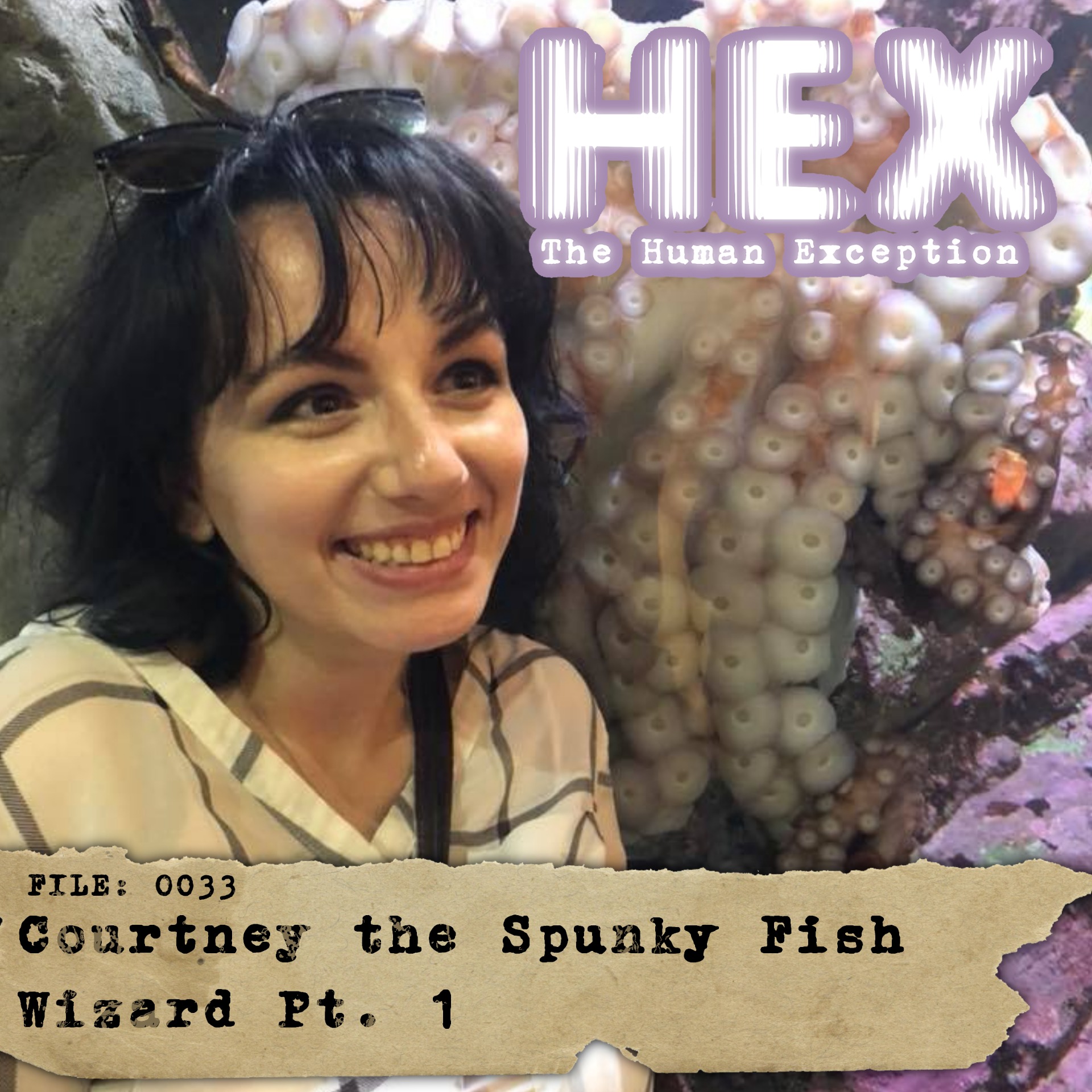
Introduction
We all have our favorite marine animals, but is your favorite as unproblematic and cute as you think? Are those little "weird" "gross" animals maybe more interesting and beautiful than you realized? Let's take a deep dive.
Content warning - discussion of animal hunting behaviors, aggressive animal sexual behaviors
Orca Orcinus orca
Orcas are the largest members of the dolphin family, and live in matriarchal groups called pods. Pod sizes vary but can have anywhere from 5-40 whales in a pod. Orcas are found all around the world, and pods have territories where they generally hunt. What they hunt varies depending on location and the pod itself.
Orcas regularly eat fish, seals, sea lions, squid, birds, and sea turtles, but also have some more surprising tastes. Usually when we think of an apex predator of the sea, we think Great White Shark but even those beasties are afraid of orcas since a pod was found to regularly kill GWS and eat their livers. Other odd menu items include moose, dolphins and other whales, and rays. Despite this, there are no recorded instances of orcas killing humans in the wild, although there have been instances of fatalities in captivity.
Orca hunting techniques vary depending on the prey, although most of the time it ends with the whale violently "playing" with its prey much like a cat, throwing it up into the air long after catching/killing it. They hunt together like a pack of wolves, working together to capture prey. When hunting dolphins, they will often split an individual off from a group, and try to herd it towards other members of the pod who will attempt to catch and drown the smaller whale.
When hunting solitary seals, they will often employ different strategies.
Washing
If a seal has taken refuge from a pod on an ice floe, orcas will often employ a "washing" technique, where one or more orcas will rush at the ice floe in order to create a wave that will wash over the floe, forcing the seal into the water, often into the waiting jaws of a pod mate, ready to beat or drown the animal.
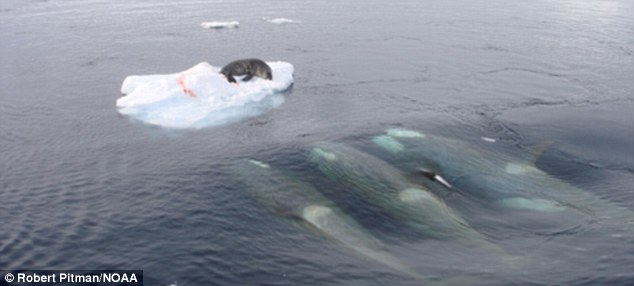
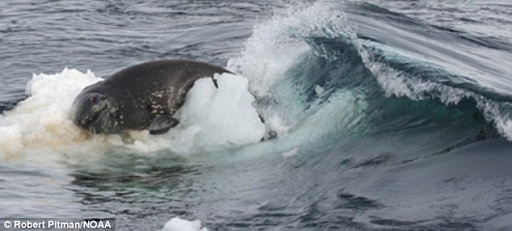
Rushing
Orcas will chase various prey into shallow waters in order to cause it to panic. Many strictly marine prey will be forced to try and return to open water (and be caught) or face the proposition of being stranded.
Dolphins

There are 36 different species of dolphins across the world. They are also a toothed whale like the orca, and found all over the world - some even in freshwater rivers.
They are also straight up perverts. Gangs of male dolphins have been known to isolate a female dolphin, beat her with their tales and force her to mate with them for weeks at a time. They have also been known to show aggressive sexual behavior with humans, shoving their noses into crotches, trying to mount swimmers etc.
Male dolphins have also been known to commit infanticide in order to force a female into heat again so they can mate with her. Dolphins have also been seen to kill and abuse the corpses of porpoises for no apparent reason.
Sea Otters
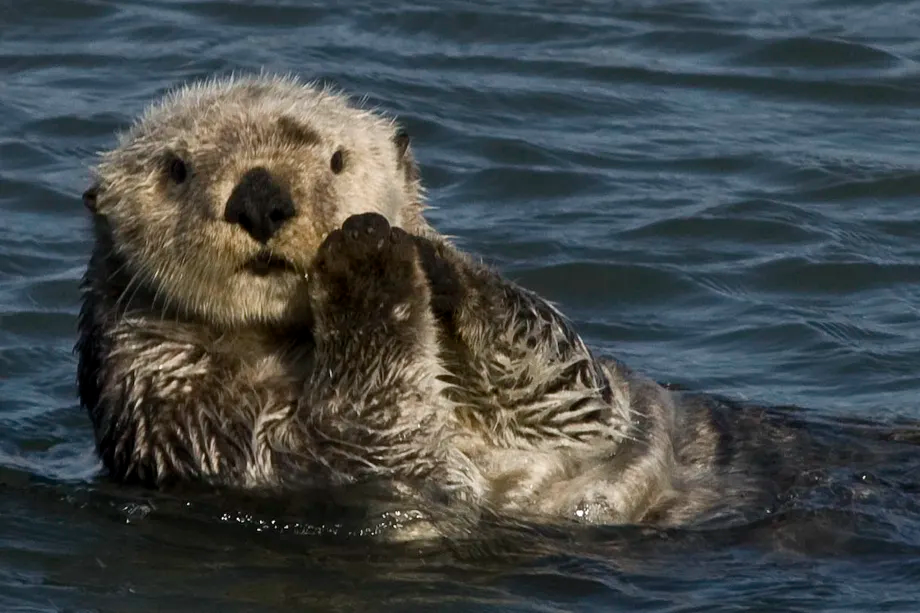
Sea otters are a member of the weasel family with 3 subspecies: the Asian Sea Otter, Northern Sea Otter, Southern Sea Otter.
They are all SUPER important to the Pacific marine ecosystem; they are a Keystone predator, help maintain the health of the kelp forests. Kelp is important as a nursery for juvenile fish, a carbon sink, photosynthesis! Some kelp grow up to 45 m long and can grow 45 cm a day (148 ft, 18 inches).Otters keep urchin population in check which helps prevent those fuckers from eating all the kelp.
They also sexually assault baby seals to death.
They will often continue to assault the corpse after they'd killed the seal.
During one study 11% of otter deaths were found to be because of "mating-related trauma". The males will bite the female on the face which can cause death. They also have been seen to drown females and continue to have sex with them afterwards.
Leafy Sea Dragons Phycodurus eques
Leafy Sea Dragons belong to the Syngnathidea family which includes sea dragons, seahorses and pipefish. Found in a small area of southern Australian, they have beautiful leafy appendages that are used in camouflage to make them appear to be drifting seaweed. Their leafy fins don't have much mobility but can use fins along its head to steer itself, and their tails don't have the ability to coil and grasp like their seahorse cousins. They measure between 20-24 cm (8-9.5 inches) and eat plankton and small crustaceans (amphipods and shrimps).
Weedy sea dragons are smaller and don't have the beautiful appendages like the leafy sea dragon. Like other members of this family, the males carry the offspring.
Also these are fish. Like weird fish, but fish nonetheless.
Nudibranchs
Sea slugs! They're Molluscs so related to clams, oysters, snails, squid, cuttlefish and octopus. They have a shell in the larval stage that they shed. Nudibranchs are hermaphroditic (note that this is NOT a way to refer to people) but can't fertilize themselves (which seems sad like clone yourself some babies).
There isn't really one way to be a nudibranch - they come in so many different shapes and colours! But scientists classify them in two general ways.
Dorids
Dorids which have little gills on their posterior that look sort of like a pony tail
Aeolids
Have cerata on the back (the ones that look like frills or fingers).
Sacoglossa
Solar powered molluscs that "steal" chloroplasts from plants and then will somehow transfer that algal nuclei into their own cell and maintain it, using it as a sort of ... battery to feed off of. Depending on the species, they can choose to either eat (heterotroph) or recruit algal cells and be autotrophic (literally "self-eating", autotrophs can create their own food from solar or chemical energy). Elysia clarki is probably one of the prettier species that has this ability
Defenses
There are many different ways that nudibranchs defend themselves: some use chemical defenses to taste nasty, some use camouflage, some are toxic. Some use kleptocnidae (literally stealing stinging cells) and steal the stinging cells from coral reefs by eating them and then deposit them in specific areas of their bodies to protect themselves from enemies.
Siphonophores

Siphonophores belong to the Phylum Cnidaria (think jellyfish, anemones, corals) but they're fucking WEIRD. They're not one organism made up of many organs, they're a colony of organisms that function as a single unit.
Different organisms within the colony (called zooids) have different functions and look different but are all the same animal, although they do mutate. Zooids which can be a polyp (think like a coral) or a medusae (think jelly) and have different functions:
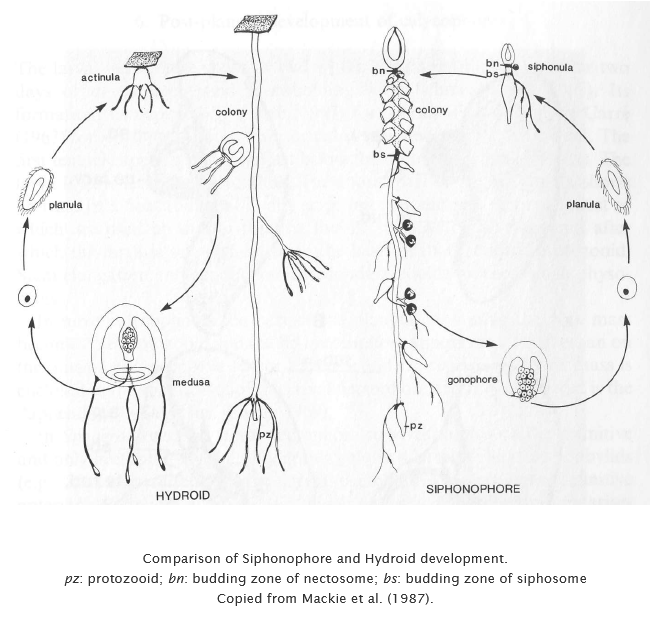
- Nectophore - medusae that assist in propulsion
- Bracts - function in protection and maintaining buoyancy
- Gastrozooids - polyps that function to assist in feeding
- Palpons - modified gastrozooids that regulate gastrovascular fluids
- Gonophores - involved in reproduction
- Pnuematophores - gas filled floats that help to float the colony can also assist in sensing pressure changes
There are at least 175 species of siphonophore, they all look wild, some are pelagic (living in the water column) and some are benthic (living on the seafloor) and have a wide variety of prey and hunting techniques.
They reproduce asexually by budding which is a complicated thing that cnidarians can do but the process varies.

Many have bioluminescence that can help them to attract prey, especially deeper in the water column/on the seafloor where there is little or no light.
One of the most common siphonophores is the Portugeuse man o' war Physalia physalis.
Ernst Haeckle described a bunch of them and many of his plates from Kunstformen der Natur (Artforms in Nature) have examples (his work is stunning go look).
Sacculina carcini

Sacculina carcini is a parasitic barnacle that specialises in parasitising the small green shore crab. They are related to the gooseneck barnacle, and is one of many parasitic barnacles out there in the sea. It is classified as a parasitic castrator and rhizocephalan ("rhizo" meaning root and "cephala" for head). Once it implants itself into its host as a larva, it sends roots into the nervous system of it's host and alters its behavior, physical structure and movement.

S. carcini needs a host in order to live and reproduce, and does so at the expense of the host crab's own reproductive abilities. It takes nutrition from the crab's gut and also uses the crab's reproductive behaviors to propagate new baby barnacles.
So what if a male is infected? They don't have the same body setup as the female and they don't have any egg grooming behaviors. That's okay! The parasite will just MODIFY THE BODY OF THE CRAB TO BE MORE FEMININE.
video of an infected crab. The weird white thing sticking out the bottom is an egg sack of S. carcini
Green shore crabs (Carcinus maenas) are bad news bears outside of Europe and northern Africa where they're native to. THey're invasive to the Pacific Northwest, the north east of America, and southern Australia. They can do major damage to the ecosystem, demolishing local flora and outcompeting local species. There were studies done to see if introducing S. carcini to parts of California and the PNW to see if it could be used as a biological control for the green shore crab, but lab tests showed that the parasite didn't discriminate between native and invasive species.

Sources
- https://phys.org/news/2020-11-orcas-blamed-safrica-great-white.html
- https://www.thesouthafrican.com/wp-content/uploads/2015/09/killer-whale.jpg
- https://onlinelibrary.wiley.com/doi/abs/10.1111/j.1748-7692.1995.tb00675.x
- https://pubmed.ncbi.nlm.nih.gov/14567210/
- https://tinyurl.com/Leafyseadrag
- https://tinyurl.com/weedysd
- https://www.ncbi.nlm.nih.gov/pmc/articles/PMC3091133/
- https://tinyurl.com/eclarki
- https://ocean.si.edu/ocean-life/invertebrates/art-forms-nature-marine-species-ernst-haeckel








